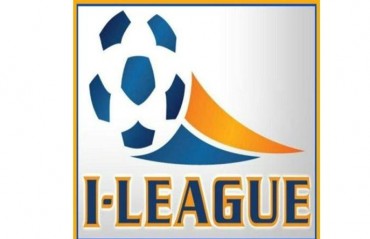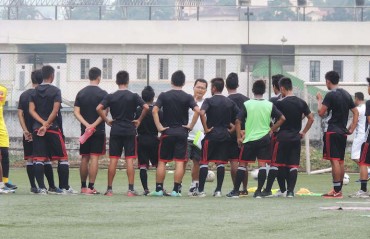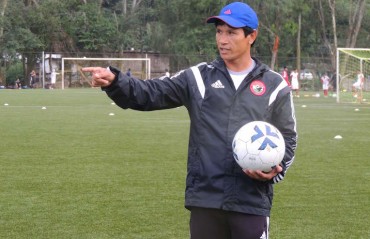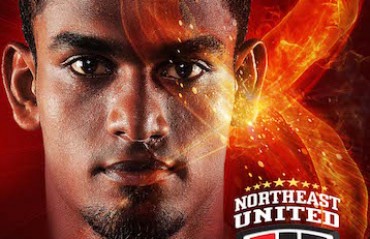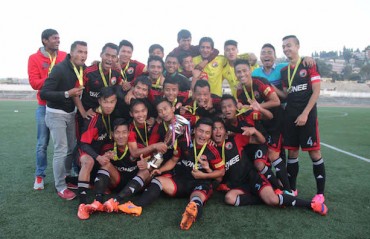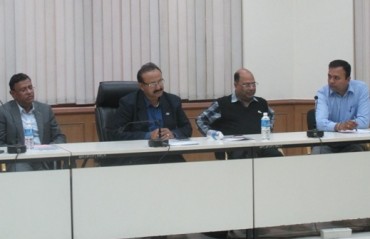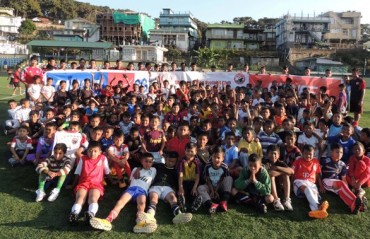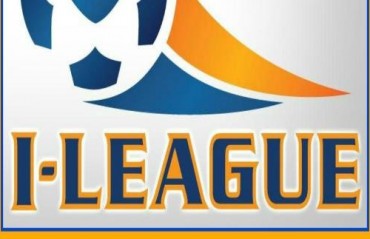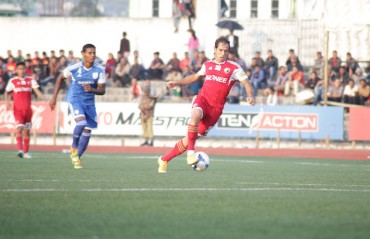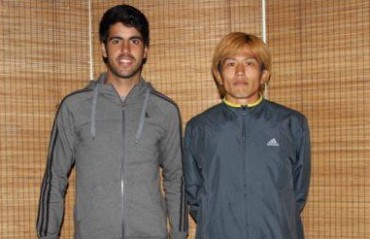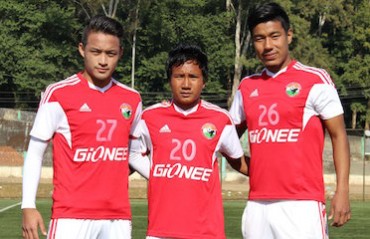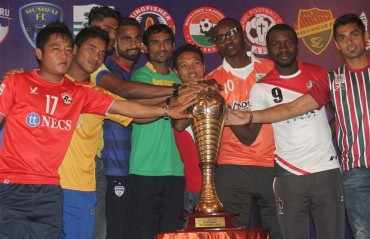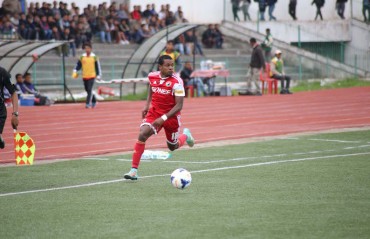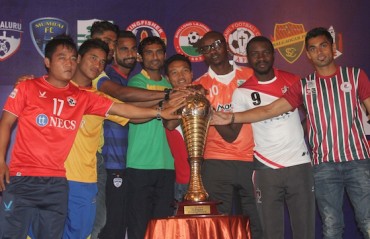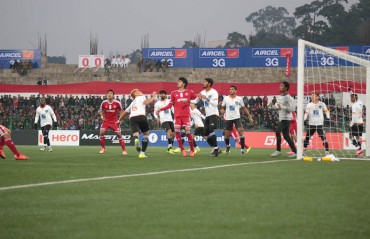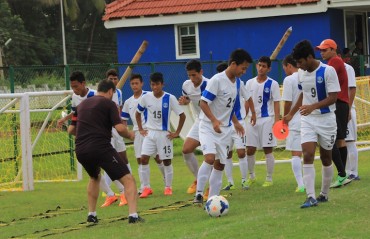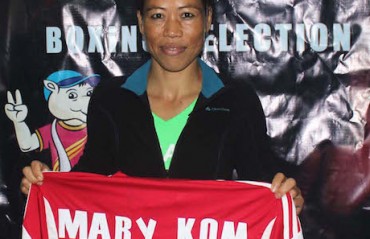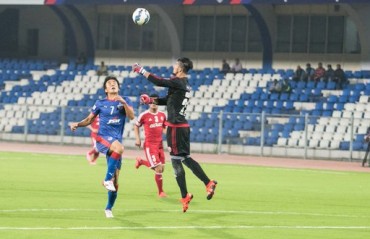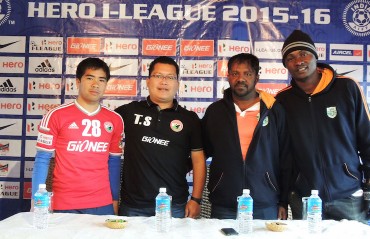#TFGinterview with Larsing Ming (Part 1): On #OneLeague, a quest for balance, and the larger meaning of 'contribution'
- By Chiranjit Ojha

- September 13, 2016
IN THE MIDST of a storm brewing around the prospect of unifying I-League and ISL, the world of Indian football seems to be strictly devided into camps who are at odds over the details. The administration (AIFF and IMG-Reliance), ISL franchises and the I-League clubs all have their own particular set of demands and interests that they want to see implemented in the "re-structuring of leagues."
These seemingly fundamental disagreements -- whether over franchsise fees or the inclusion of promotion and relegation -- have often forced these Indian football stakeholders into direct confrontation, as happened recently with the Goan clubs. A search for middle ground, months since the merger plan was first unveiled, is still going on, and for now there seems to be no common thread holding all the parties together.
Here, the perspective of Larsing Ming Sawyan particularly holds weight, because he is one of just two people who have had their feet in all the relevant shoes. He is an administrator (AIFF Vice President, Meghalaya Football Association President), an I-League club owner (President of Shillong Lajong FC), and a former co-owner of an ISL franchise (NorthEast United FC). The only other man who fits this description is Srinivas Dempo. So, having seen all sides of the spectrum, his take on the whole situation that he elaborated to TFG was a coherent account of a footballing society trying to iron over differences to align themselves towards a common goal; a process far less chaotic than appears from a distance.
Mr Ming did not deny that clubs like Shillong Lajong were under pressure due to the possibility of a forced relegation to League One. And like any club owner he made it clear he wanted Lajong to have a place in the top division, and called for a better interpretetation of a club's "contribution" to Indian football than just a big budget and franchise fees,
"I feel we deserve to play in the highest structure of Indian football. That's my personal opinion. The reason being that we've done a lot to develop football in North-East over so many years. We were the first club to establish a pan-North-East system of spotting, nurturing and developing talent; and in fact we're the only team in the region that does that. No other team can match the depth of our reach and efforts in that regard. Also, we were the first North-Eastern club to make it to the top division and we've consistently sustained our place in it. We even played a role in bringing an ISL franchise to the region. I hope people take note of that and recognize our contribution... North-East does deserve more than one team in the top division. It contributes such large number of players to the national team!"
That said, he did not reject the franchise fee and one-team-per-city model being pushed by IMG-Reliance altogether, but called for a more contextual interpretation of those policies depending on the cities in question,
"I see the ISL's pay-and-play model as a way of incubating modern football clubs. It's a necessity. Indian football needed new clubs and the ISL franchises filled that void... I'm sure with time they'll evolve from franchises into clubs. But perhaps it would be important to also nurture some of the existing clubs that have been here for the past so many years. Of course, it will be difficult to pick and choose which club gets taken in and which one is left out... but one thing that needs to be taken into account is reasonable representation. We can't have too many clubs from a single centre, it'd make the league and the clubs unsustainable. But at the same time a balanced approach is necessary. For example, a city like Kolkata can easily accommodate 3 clubs in my opinion. And similar structures can be followed in other parts of the country."
One of the chief points of disagreement in the re-structuring process is the presence of promotion and relegation in the new top division. IMG-Reliance, in a bid to safeguard their original agreement with ISL franchises, have proposed a top league without any relegation, or an opportunity for second division winners to come up. Many I-League clubs have found this enraging, but Larsing Ming was less dismissive of it,
"As far as I understand, relegation and promotion in the ISL will automatically happen after 7 years. But the question is whether it'll happen from year one or a few years thereafter. I personally believe that there are two factors: relegation and promotion are fundamental aspects of any league setup. Having said that, there is a fact that franchises have come into existence directly with a lot of investment, and they need some gestation time for them to be stable and sustainable. How does one address that is going to be the crucial aspect."
The Shillong Lajong president himself, however, was ready to take a stand for an open league from the very get go.
"I personally would like to see some sort of promotion-relegation structure being introduced. It'll make the league more competitive and it will give the lower tier clubs an aspiration to look at. Without it, we won't be able to create enough investments at the base, you know. The top of the league pyramid needs a strong base to sustain. We need teams that meet a certain financial criteria at the lower league who in time through merit can make it to the top division. That's what happens in all European leagues. And let's not forget, this is how Lajong made it to the top division. We started out as a small team but had a path towards that success. As much as you may want to follow the US or Australian model, it's the Europen model that introduced football to the world and the most popular one. So discarding those systems... I'm not sure it's a good thing."
Looking forward to how the negotiation process will pan out over the next few months, he said he was hopeful of the final model would be a progressive one that took into account all the stakeholders.
"The structures that were put forward have evolved over the time. Whatever was put into place on that meeting in May was a huge step forward compared to some of the plans and structures we had in the past. So I think it was a very positive meeting, but as all meetings it can't be one hundred percent positive. But it was largely positive and had a proper technical thought process behind how everything was put into place, and I think by adding a bit more to this plan we can reach a point of finality."
When asked to comment on which clubs he thought had the best chance to get into the new top division come 2017-18 under the current merger model, and where Shillong Lajong would figure in that scenario, the AIFF Vice President played it diplomatically.
"I think it's all hypothesis at this point, and I don't want to comment on such calculations and permutations. The only thing is, as I've mentioned already, I do feel clubs like East Bengal, Bengaluru FC and Mohun Bagan deserve to be in the top division. They will definitely bring a lot of character, passion, professionalism and colour to the league, as well as a heritage factor, which would add value. And I do hope that at the same breath I hope even Lajong could be looked into as a kind of a similar scenario. I do believe that Lajong FC brings in heritage, legacy and passion of the North-East as a club that's promoted from within the region and has an expansive network across it. I hope that we'll also be considered. That's all I can say. Overall, in I-League, there are 5-6 clubs who deserve it."
Ming, and Shillong Lajong, had a brief tryst with ISL as stakeholders in NorthEast United. In 2014, they helped launch the franchise by providing them with almost their entire squad. After the inaugural edition of ISL ended, Lajong sold off its stakes in the franchise. Looking back at that experience, he said he only wanted to take away the lessons that came with being part of a high-profile mega event of that scale.
"You know, the biggest learning of ISL is the way it has marketed itself. The marketing systems that have been put in place for the franchsies to follow and promote themselves in various ways, including social media, ATL-BTL et cetera. That has been the biggest lesson of the ISL. As we all know, without commercialization there cannot be real sustainability. ISL has shown that football can be marketed in India, that there's a big market for it, and now it's just a question of how we can sustain that momentum and find the right balance wherein we market Indian football and at the same time develop it holistically."
With the advent of ISL, clubs like Shillong Lajong that are heavy on young local talent and low on the budget have made good money by loaning players out to ISL franchises. The Director of Shillong Lajong, Nikhil Sharma, had identified that as a major revenue source for the club at a past event. Asked whether a merging of leagues could affect that business model, Ming explained,
"First of all we need to understand whether we're playing ISL or League One. Only then we can evaluate our situation. But hypothetically speaking, Lajong is very clear in its philosphy. Over the last 5-6 years, our average age in the senior team has not gone above 21-22. Our primary objective is to produce talent for this country at this point. That's what's driving us, nothing else. We don't want to win some titles here and there and not see Indian football go forward. Our objective is to grow Indian football, that's what we've been doing for the last 5 years. I'm happy that today two U-21 boys are in the national team -- Sana and Isaac -- come from Shillong Lajong. I do hope that goes up to 4-5 in next 2 years. So we'll look to do that, and if you develop good players, no matter which league you play in you can always look at transfers as a potential source of revenue... Juventus sold Pogba for a world record fee, but they don't come from a lesser league. So these things happen even among equals. Indian clubs that focus on developing players can actually find a good revenue stream that way in the next few years."
So would Shillong Lajong, as a club focused on player development, accept a place in the lower league (League One) if the offer on the table -- the cut of central revenue and other compensations -- was good enough? Or would they want to up their budget to match the ISL franchises and pay franchise fees to take a shot at the top tier, if given the option? The club president responded:
"We want to build our foundations from bottom upwards. So whatever decisions we'll make will depend on what sort of structures are available. But in the next few years our aspirations are towards building one of the country's better youth development systems both in terms of training as well as infrastructure. So in this regard we've already earmarked about 30 acres of real estate for that process and we have a clear-cut 5 year plan to develop a training centre which could be an asset for Indian football. So that will be the primary focus and everything else will revolve around that... it also depends on how Lajong is looked at in terms of adding value to the league. At Lajong we're very very serious about developing Indian football and our track record will say so."
While we were still on the subject of the merger, it seemed appropriate to ask Mr Ming about another point of contention in this issue: the number of foreigners in the team. The I-League follows the standard set by AFC -- just 4 in the whole squad -- while ISL teams sign about a dozen foreign players and play 6 in the starting line-up. Ming accepted that the disparity between the two wasn't healthy and a middle ground had to be found soon. The reason, he said, was that this situation had a direct effect on the national team,
"I think there has to be a balance and it's between four or five in my opinion. Maybe more foreign players can be registered but only four or five should be allowed to play. But you need quality foreigners also, it helps with the commercialization and also raises the quality of the league. But at the same time we have to make sure there are enough Indians playing. I'd suggest a 12 team league, where at least 6 Indians start every game for each team. That gives us 72 regular Indian players. In my opinion you need to have at least 70 to 80 Indians starting top division matches every week in order for the national team to have any chance of improving. Because you need 25 players in the national squad, and if you're picking them out of 40-50 players it doesn't help. We won't be able to sustain our domestic interests in the league that way, and the national team will not make the progress we want it to."
PART 2: Larsing Ming Sawyan on the upcoming I-League season, structural issues within the AIFF, and the football infrastructure in Meghalaya. CLICK HERE TO READ









